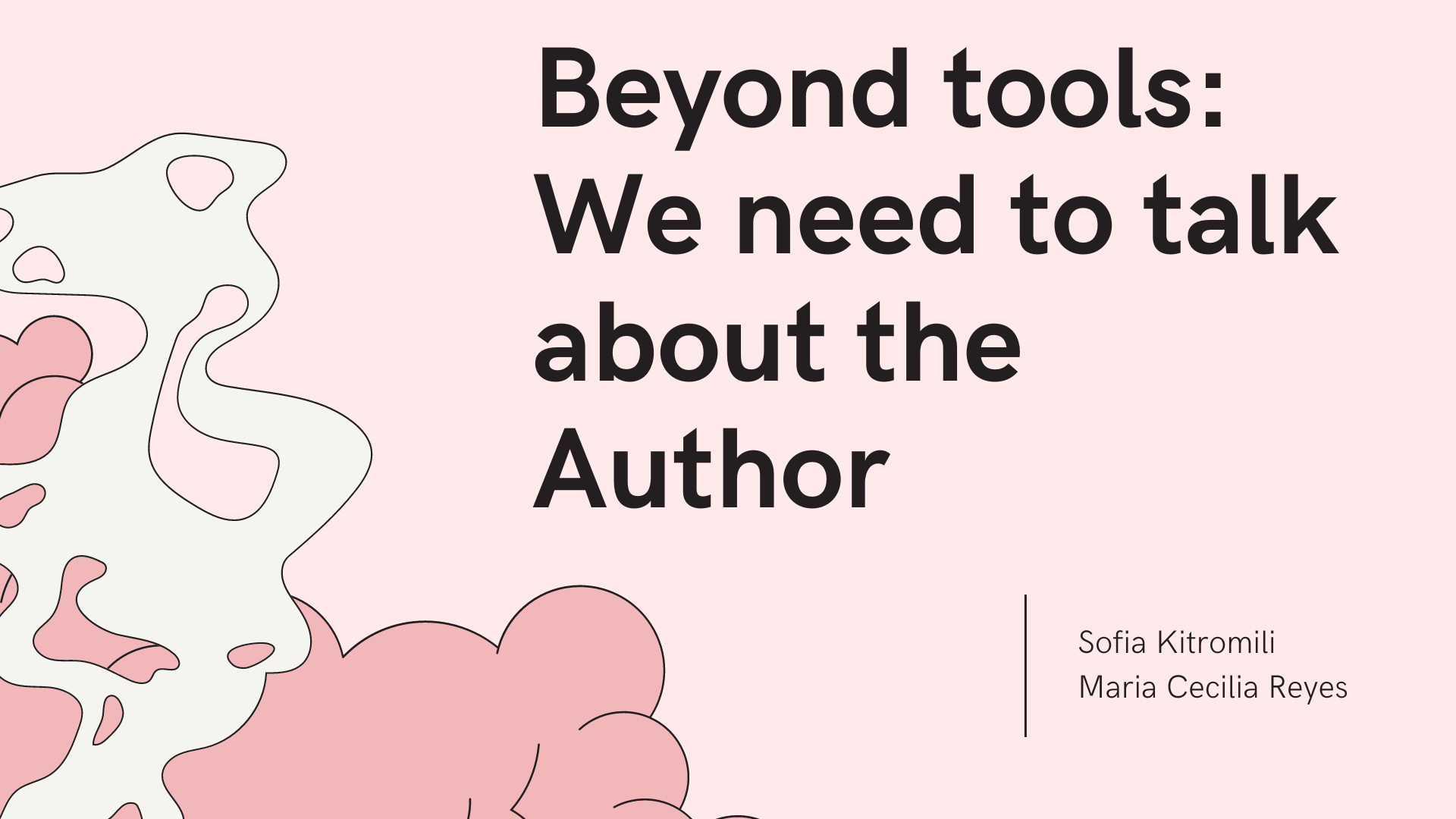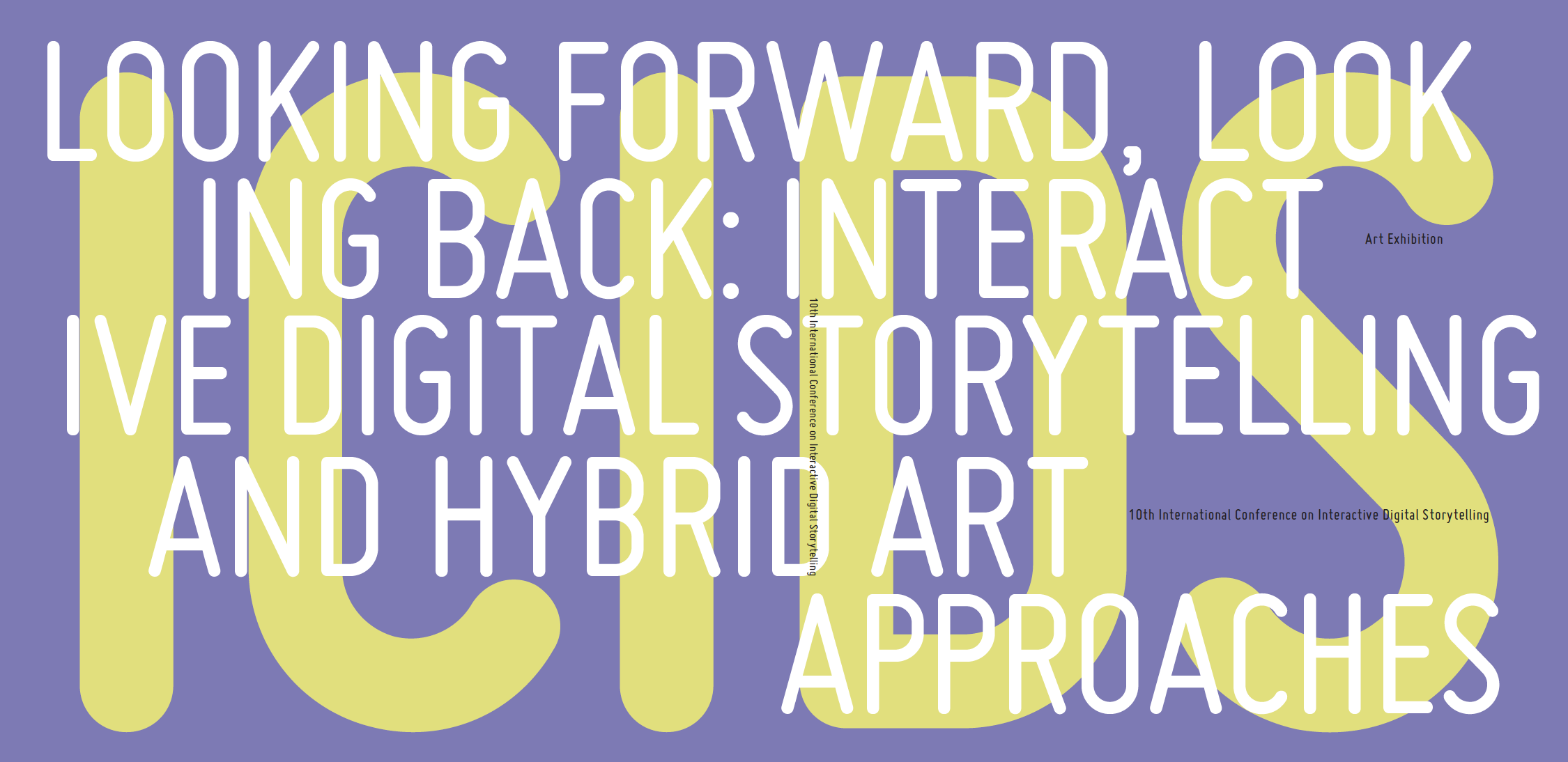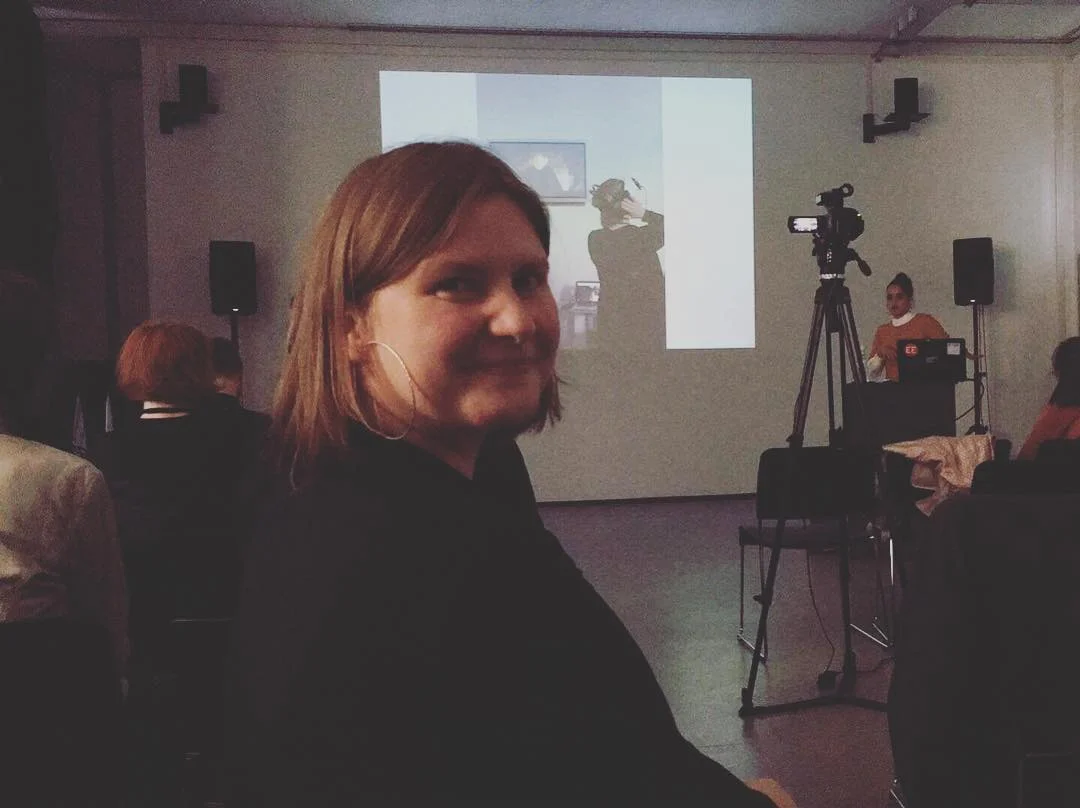Masterclass "Integrating Interactive Fiction with Cinematic Virtual Reality" @ Kinemalab Gothenburg Studios
I have been invited to give a masterclass at the Kinemalab of the Gothenburg Film Studios in Sweden, on next 15th of October. I will present insights from my experience creating an interactive fiction structure for fiction and documentary cinematic virtual reality experiences.
MASTER CLASS
15 OKTOBER. 13:00-15:00
Anmäl dig: kinemalab@gothenburgstudios.se
Integrating Interactive Fiction with Cinematic Virtual Reality
In this Masterclass, I will present insights from my experience creating an interactive fiction structure for fiction and documentary cinematic virtual reality experiences. I will share thoughts on the audiovisual language of cinematic VR, notions for writing an interactive screenplay, and some questions regarding the creation of immersive narrative experiences.
During the Masterclass, I will be presenting the development and production process of creating an interactive film that uses an interactive fiction structure together with cinematic VR (360º video), while reflecting on the challenges and strategies to overcome the low level of interactivity that cinematic VR offers. I will also share an evaluation framework for this kind of artefact.
Beyond tools: We need to talk about the Author
Sofia Kitromili and I will be presenting our position paper “Beyond tools: We need to talk about the Author” at the Narrative and Hypertext Workshop during the conference HT ’22: 33rd ACM Conference on Hypertext and Social Media, held in Barcelona.
Some results of our activity.
Sofia Kitromili and I presented our position paper “Beyond tools: We need to talk about the Author” at the Narrative and Hypertext Workshop during the conference HT ’22: 33rd ACM Conference on Hypertext and Social Media, held in Barcelona.
Beyond Tools: We need to talk about the Author (Position Paper. PDF)
Sofia Kitromili (Bournemouth University, UK) and Maria Cecilia Reyes (Vilnius University, Lithuania)
Abstract: Ever since digital interactive authoring tools made creating IDNs (Interactive Digital Narratives) approachable to a wide audience of people beyond programmers and curious academics, we have not stopped talking about them. We have been inventing them, testing them, improving them, and re-inventing them tirelessly. As we should. However, if we take a step back and think about what we have really been talking about, whenever we meet to discuss interactive digital narratives, is tools, narrative forms, ‘the authoring problem’, and while all those are topics we should be discussing, and building knowledge on, we have forgotten to discuss about humans. Who are we building these tools for? Who is using them to make the stories? How are they using them? It is about time we take a break from talking about the myriads of our tools. In this article we are going to talk about the interactive author, or as we shall refer to them at the end of this article, the interactive creator.
Shooting an Interactive VR Film: Zena's Case Study
“Shooting an Interactive VR Film: Zena's Case Study” Chapter of the Volume “Looking Forward, Looking Back: Interactive Digital Storytelling and Hybrid Art Approaches” by: Rebecca Rouse, Mara Dionisio
ZENA is an immersive and interactive film set in Genoa, Italy. The story unfolds in a 360º environment created through 360° high-definition video capture developed to create virtual reality experiences such as Cinematic VR (cVR). In ZENA, the user plays an active role inside the narrative by taking part directly in the story: s/he decides which way to go in a Maze type structure (Ryan, 2015), if s/he wants to follow or ignore the advice of some character, or access extra information that contributes to story understanding. The narrative structure has been inspired by the labyrinth of alleys in the historic center of Genoa, where passersby come face to face with choices that lead them to interact with different environments and people. ZENA, which means Genoa in genovese dialect, was recorded inside the historical center of Genoa (Old Town), which is a World Heritage Site. The scenes, that develop in the alleys and in some important palaces in the Old Town, show these environments for the first time in VR.
The main objective of ZENA is to bring together an interactive film narrative inside a 360º environment to be enjoyed with a Head Mounted Display (HMD), in order to create an interactive and immersive cinematic experience: an Interactive VR experience similar to hyperfiction, in which the user rearranges a choice of story fragments into different configurations (Ryan, 2009), placing him/herself between a passive reception, as it is the case with cinema, and a highly active role, as in videogames. In this paper, the shooting process of ZENA is reported, highlighting the main challenges we faced and hindsight gained. For the production of ZENA, we based our methodology on the traditional cinematography production workflow, being cinema the audiovisual art form closer to this type of experience, but adapting it to Interactive Narrative (IN) (Dettori, 2016) and the immersive nature of Cinematic VR.
Looking Forward, Looking Back: Interactive Digital Storytelling and Hybrid Art Approaches
edited by: Rebecca Rouse, Mara Dionisio
This volume collects documentation of the 2017 International Conference on Interactive Digital Storytelling Art Exhibition and new scholarly texts from the artists involved. The work traces themes of Time & Tempo across Digital Poetics and Literature, Digital Heritage, and Urban Space and Politics.
This volume collects documentation of the 2017 International Conference on Interactive Digital Storytelling (ICIDS) Art Exhibition and new scholarly texts from the artists involved. The work traces themes of Time & Tempo across Digital Poetics and Literature, Digital Heritage, and Urban Space and Politics. Since 2013, the ICIDS Art Exhibition has been chronicled online, as well as documented in a printed catalogue.
This collection documents the 2017 exhibition, held in conjunction with the ICIDS conference at M-ITI Madeira Interactive Technologies Institute, Funchal, Madeira, November 14-17, 2017. This represents the first time the ICIDS Art Exhibition catalogue has been published, and it is also the first time the catalogue has been expanded to not only document the work presented, but also collect textual scholarship from a subset of the artists involved, reflecting on a range of challenges and questions in the field.
The blended nature of this volume, including contributions across traditional scholarship and theory as well as research-creation art practice helps to expand notions of knowledge production by highlighting and bringing together these multiple approaches in the interactive narrative field. In addition, the wide range of creative works exhibited here pushes the boundaries of what ‘counts’ as interactive narrative.
These two moves toward expansion (expansion of what research means; expansion of what is defined as interactive narrative) are meant as productive and generative provocations for the field.
Pages: 148
Language(s): English
Release Date: 30.11.2018
DOI: 10.1184/R1/7406924
ETC Press
ISBN: 978-0-359-11468-9
Towards The Artificial Experience: Interactive Fiction in Cinematic VR at ZIP-SCENE
I will be sharing the results of my PhD Thesis in Interactive Fiction in Cinematic Virtual Reality at the ZIP-SCENE Conference, that will be held at the University of Art and Design, in Budapest, Hungary.
How cool is to show the main organizer as the ideal interactive VR-viewer. Surprise from Cecilia Maria Reyes, initial picture taken at #icids2017 mise-en-abyme photo by @orsidoczy at #zipsceneconference #budapest #vr #interactivestorytelling #immersionmodel — con Orsi Doczy y Xeh Reyes en MOME - Moholy-Nagy Művészeti Egyetem.
I will be sharing the results of my PhD Thesis in Interactive Fiction in Cinematic Virtual Reality at the ZIP-SCENE Conference, that will be held at the University of Art and Design, in Budapest, Hungary.
The topic of this year will be Perspectives on Digital Interactivity and Narrative in Performing Arts and VR
Le Marittime Irraggiungibili su Contemporaneamente
Ho avuto l'occasione di condividere l'esperienza de Le Marittime Irraggiungibili: Scenari Alpini a 360° al convegno Contemporaneamente 2016. Organizzato dal Piccolo Opificio Sociologico all’Università degli Studi di Firenze.
Ho avuto l'occasione di condividere l'esperienza de Le Marittime Irraggiungibili: Scenari Alpini a 360° al convegno Contemporaneamente 2016. Organizzato dal Piccolo Opificio Sociologico all’Università degli Studi di Firenze.
Ecco qui l'abstract book con i progetti che hanno partecipato a questi giorni pieni di input.
Narrazione Interattiva in Realtà Virtuale: Vivere il film
Sono stata invitata al OpenDay del CrossmediaLab dell’Università di Bogotà Jorge Tadeo Lozano per parlare sulle diverse possibilità delle narrative che si possono sperimentare nella realtà virtuale.
Sono stata invitata al OpenDay del CrossmediaLab dell’Università di Bogotà Jorge Tadeo Lozano per parlare sulle diverse possibilità delle narrative che si possono sperimentare nella realtà virtuale. Se pensiamo al concetto Realtà Virtuale al di fuori del contesto tecnologico, troviamo una grossa ambiguità del termine che vuol dire qualcosa tipo: “la realtà virtuale è un evento o soggetto che è reale in effetto ma non di fatto”, quest’ambiguità gioca con quello che effettivamente succede quando utilizziamo un HMD (head mounted display) ovvero la maschera di realtà virtuale: la realtà fisica si allontana dalla realtà cognitiva, la nostra mente vive una realtà diversa a quella che vive il nostro corpo, situazione che possiamo vivere “in natura” quando dormiamo o sotto l’effetto di qualche sostanza psicodelica o anestisiante. Non in vano Google ha denominato la sua azienda per la VR “Daydream“.
Demo - Le Marittime Irraggiungibili
Inizia quindi una sfida per i creatori di contenuti. Abbiamo un nuovo mezzo a disposizione per raccontare storie che ora sono esperienze, e cambiano le regole del gioco. Per chi proviene da un background nettamente tecnologico e abbia voglia di creare esperienze complesse oltre alle situazionali, ha bisogno di iniziare a prendere in considerazione i concetti basilari della narrativa classica, la cinematografia e il teatro, perché sono queste arti quelle che offrono gli indizi e le chiavi per iniziare a decostruire il linguaggio della Realtá Virtuale, un linguaggio che in qualche modo possiamo intuire grazie alla educazione audiovisiva che abbiamo ricevuto grazie ai film e la tv, e alla educazione interattiva che ci ha offerto l’ipertestualità negli ultimi vent’anni. Non è un mezzo strano per noi, anche se è diverso da qualsiasi altro mezzo che abbia mai creato l’umanità e che poteva solo emergere oggi con gli sviluppi tecnologici. Nelle caverne, le chiese, le tombe e i panorami, l’uomo ha cercato di creare ambienti sferici che rinchiudono la visione umana per allontanarlo dalla realtà quotidiana, ciò nonostante solo ora la nostra coscienza riesce ad essere completamente estrapolata. Chris Milk, uno dei più riconosciuti creatori per VR, dice che la realtà virtuale è l’ultimo medium, il medium definitivo, perché se negli altri medium la coscienza interpretava il medium, in VR la coscienza è il medium.
In effetti, il creatore diventa una sorta di Dio, creando una realtá dove immergerá completamente al suo recettore, da dove il fruitore può solo uscirne togliendo la maschera. Emergono quindi tante domande: “come possiamo creare esperienze attraenti che riescano a mantenere l’attenzione del fruitore?” “come possiamo creare un senso di autonomia e libertà per il fruitore nel nostro universo narrativo?” “come possiamo dare un vero senso di realtà che permetta una vera immersione?”
Mentre l’era dell’informazione elettronica matura, l’era dell’esperienza inizia. Già nella storia dell’umanità migliaia di artisti ci hanno regalato un vasto numero di universi narrativi che possiamo riconoscere a colpo d’occhio. È ora di iniziare a pensare come portare questi universi a un mezzo che mette alla prova la nostra sensorialità e la nostra corporeità. E mentre diventiamo sempre più bravi a creare esperienze artificiali, alcune delle domande tradizionali della filosofia smettono di essere solo ipotesi. Nel momento in cui il nostro tempo trascorre in una realtà parallela diversa, nell’altrove, e anche se per un solo istante ci dimentichiamo della realtà -quella reale- cominciamo a chiederci cos’è la realtà, eppure, cos’è l’esistenza.
Nella prossima settimana svilupperemo un workshop con 12 studenti con l’obiettivo di creare due cortometraggi a 360º dove il tema centrale sarà la riconciliazione, tema molto importante in Colombia a proposito degli accordi di pace.
Published on: Carné di Ricerca Digital Humanities
CrossmediaLab - Universidad de Bogotá Jorge Tadeo Lozano










